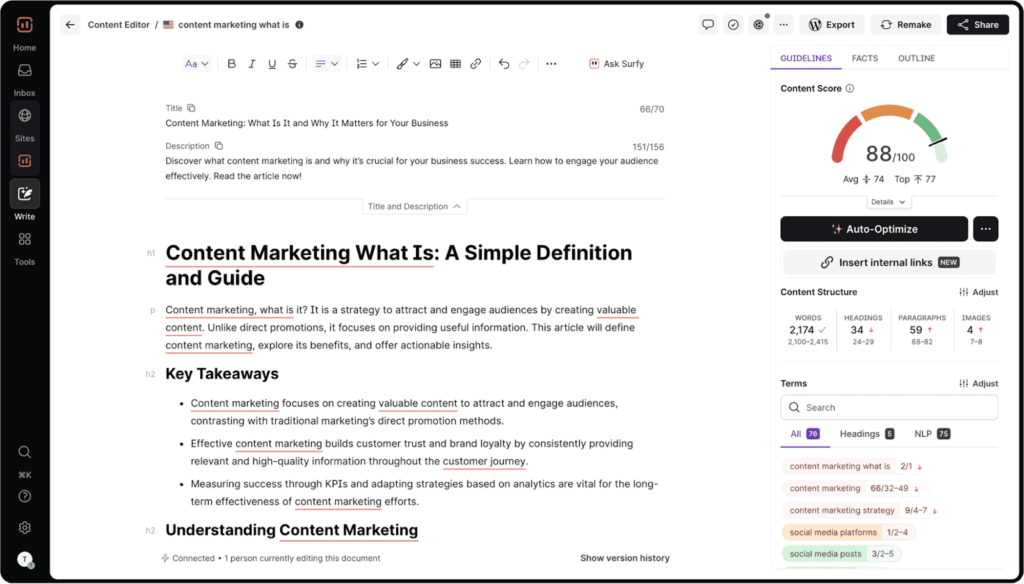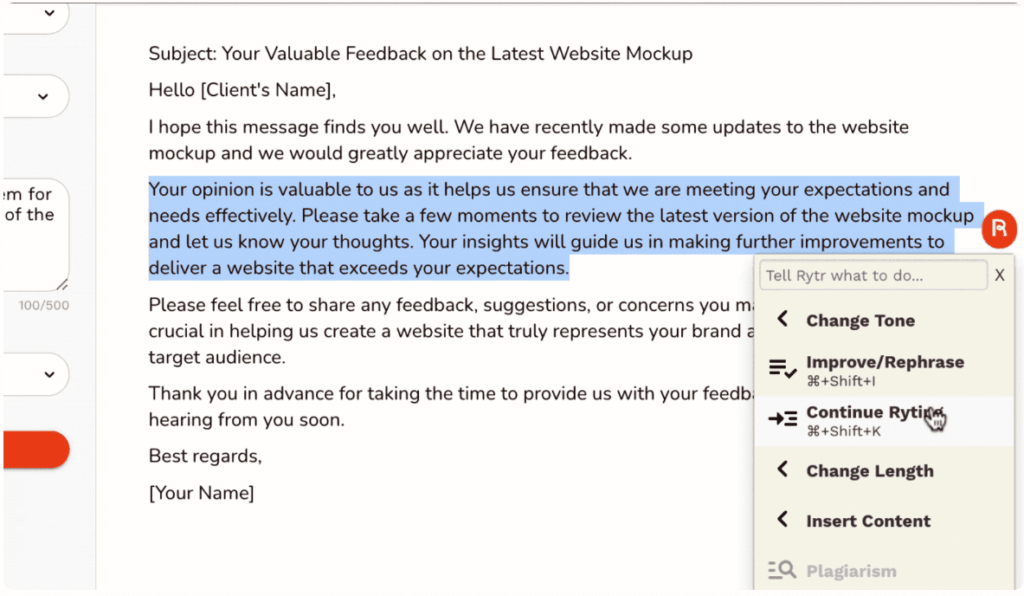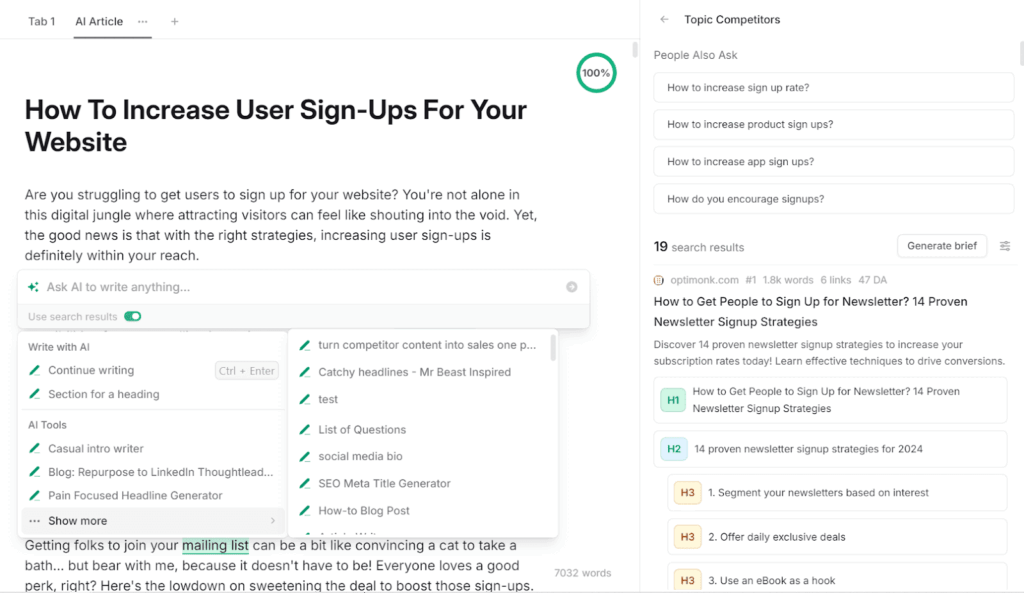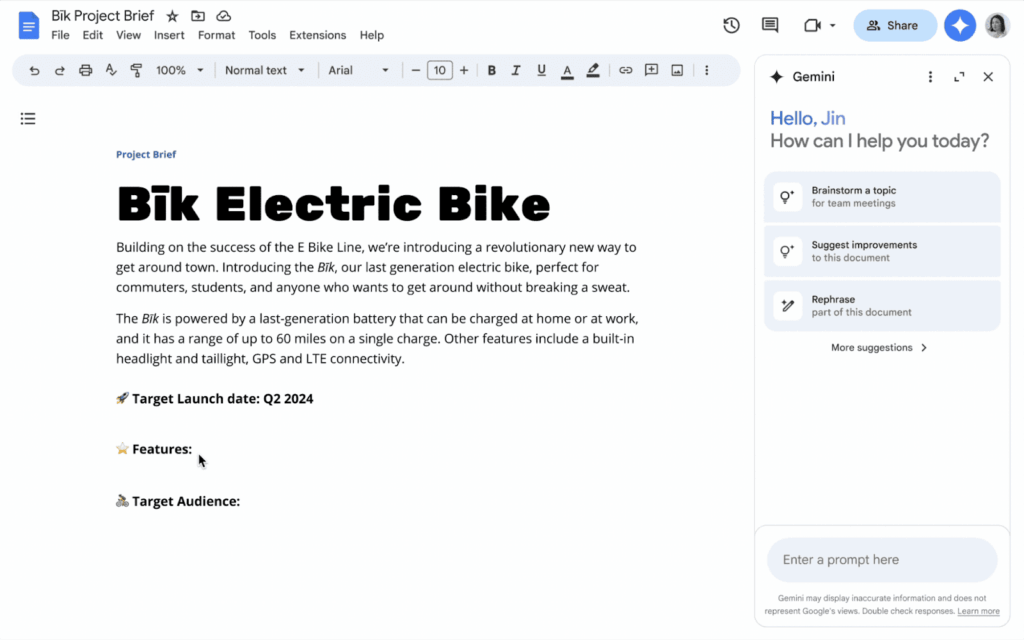
When creating content, writers and marketers look for speed, accuracy, and consistency across every channel, from blog posts to product descriptions. That’s where the best AI writing tools come in.
These tools don’t replace human creativity. Instead, they act as partners who make drafting, editing, and optimizing much faster. With the right setup, you can transform ideas into SEO-friendly content in minutes, rather than hours.
In this guide, we’ll look at the top AI writing tools to use in 2025. You’ll see what each one does best and how to choose the right fit for your workflow.
AI has moved from hype to everyday use. Content marketers, agencies, and business owners rely on AI writing tools to plan, draft, and refine text across many formats.
These could be blog posts, social media posts, and product descriptions. These tools help teams create content faster and with less effort.
According to a 2025 survey by McKinsey, more than 75% of organizations now use AI in at least one business function. Text generation ranks as the top area of this adoption.

Here’s why AI writing tools matter now:
With so many options available on the market, selecting the right AI content creation tool can be overwhelming. The best choice depends on your goals, team size, and the type of content you produce. Before signing up, here are a few key factors to consider:
Content needs. Decide whether you need help with blog writing, product descriptions, or social media captions. Some tools are better at long-form writing. Others focus on quick posts or product copy.
Key features. Prioritize tools that offer SEO optimization, plagiarism detection, and a grammar checker. If maintaining tone is important, check whether the tool offers brand voice consistency. Some platforms even include extras, such as AI image generators or Google Workspace integration.
Scalability. Freelancers or solo creators may prefer opting for free or budget-friendly AI tools. Larger marketing teams may require enterprise-level features. These could be collaboration tools and integrations with CRM systems.
Team workflows. If multiple people are involved, look for features such as version history, role-based permissions, or real-time collaboration. These make it easier to keep projects organized.
Pricing vs features. Free tiers are great for testing. However, premium plans typically unlock advanced features such as predictive scoring or unlimited content generation.
There are a lot of AI-powered writing tools on the market today, but not all are worth your time.
The following list highlights ten of the most reliable options in 2025. Each tool stands out for its unique strengths, ranging from SEO optimization to brand voice control to bulk product descriptions.
ChatGPT is one of the most popular AI writing tools available.
Powered by advanced large language models (LLMs), it helps writers with everything from brainstorming blog post ideas to generating polished drafts.
Many teams use it as their go-to AI text generator for social media posts, product descriptions, and email copy. Some also use this AI tool for SEO content creation when blogging regularly.

Screenshot provided by the author
Some of the most valuable features for content creators include:
ChatGPT offers Personal and Business Plans, and both include a one-month free trial.
After the free trial expires, Personal Plan pricing is as follows:
The Business Pricing plans include a Free Plan and a Business Plan. The Free Plan is the same as the Personal Free Plan.
The Business Plan includes everything from the Personal Plus plan, with increased limits (e.g., unlimited search and upload access). It also includes business features like advanced security, tools for teams, and meeting and voice transcription.
Jasper is an AI content creation tool designed for marketing teams.
Its standout feature is brand voice control, which ensures all AI-generated content aligns with your company’s tone and style. This makes it especially valuable for any SaaS startup, AI development company, or any other team that publishes across multiple channels and wants every piece to have a consistent look and feel.

Jasper offers a range of tools built to streamline content creation at scale:
Jasper’s pricing keeps it simple with just two tiers: Pro and Business.
The Pro Plan starts with a 7-day free trial and continues at $59 per month when billed annually and includes one seat, smart customization with two brand voices, five knowledge assets, and three audiences.
For custom pricing on the Business Plan, you’ll need to contact Jasper’s sales department. All business plans include everything from the Pro Plan and much more, custom-tailored to your specific business needs.
Claude, developed by Anthropic, is known for producing thoughtful and context-aware writing.
Unlike tools that focus only on speed, Claude excels at handling longer, more detailed tasks. These include reports, research proposals, and in-depth blog posts. Its design also emphasizes safer outputs, which makes it a strong option for professionals who need reliable text.

Claude offers several capabilities that set it apart:
Claude offers three-tier pricing:
Claude also offers Team and Enterprise tiers for collaboration and businesses operating at scale.
Surfer is best known for its powerful SEO tools. And its writing assistant is built with optimization.
It helps writers create SEO-friendly articles by suggesting keywords, structure improvements, and internal links that align with top-ranking pages. This makes it especially useful for content teams focused on driving organic traffic.

Surfer’s writing assistant provides actionable insights while you write:
Surfer’s pricing tiers cover every business size, from SMBs to Enterprises.
Rytr is a budget-friendly AI text generator that’s popular with freelancers, startups, and small teams.
It’s designed for speed and simplicity. This makes it a practical choice when you need usable copy without investing in complex features.

Rytr gives users a set of tools to cover everyday writing needs:
Rytr is an affordable tool that offers a free forever plan, the ability to cancel anytime, and the choice to pay annually (and get two months free!) or monthly for your subscription. Here are the available subscription options:
Frase helps content teams create smarter, more optimized articles.
It combines search engine analysis with AI-assisted drafting. It shows what’s already ranking. This means that Frase can help writers design briefs and then use its AI content generator to fill in the gaps with fresh, relevant text.

Here’s how you can benefit from Frase AI-powered features to make content creation faster and more strategic:
Frase is another tool that offers a significant discount for paying annually, but also offers a monthly billing option if you’d prefer to pay that way instead. The tool has three subscription tiers: Starter, Professional, and Enterprise.
Gemini is Google’s own AI writing assistant.
It’s built directly into Google Workspace, making it a great choice for teams already using Google tools for everyday collaboration. Its biggest advantage is convenience. You don’t need extra integrations to get started.

Gemini provides writing and research support inside the apps you already use:
Gemini is Google’s answer to ChatGPT, and its pricing is also similar.
Anyword offers an AI blog writer called the Blog Wizard.
This tool helps writers go from a keyword or headline idea to a complete, structured draft. It also has predictive scoring built in. This allows Anyword to estimate how well your copy is likely to perform before you hit publish.

Anyword’s Blog Wizard and performance tools make it useful for both marketers and writers:
Anyword provides two pricing options on its website for individuals and small teams.
Anyword also offers two tiers for larger businesses: Business and Enterprise. However, you must contact their sales department for pricing.
Copy AI is an AI content creation tool for marketers who need quick drafts across a wide range of formats, such as blog posts and social media campaigns. Its interface makes it easy for teams to generate ideas, polish drafts, and move content into production.

Copy AI comes with several tools that make content creation fast and collaborative:
Copy AI divides its pricing into two categories: Self-Serve and Enterprise. Self-Serve comprises the Chat and Agents tiers, crafted (respectively) for small teams driving value with AI and for teams scaling AI with automation and brand-aligned content.
Copy AI’s Enterprise tier is for organizations ready to power their go-to-market strategies with AI. Enterprise includes guided jumpstart implementation, API access and bulk workflow runs, 20+ tech integrations, unlimited customizable workflows, a designated account and support team, and enterprise-grade security protocols.
Pricing for this tier is custom, and interested organizations must contact Copy AI’s sales team for a demo.
Hypotenuse AI is tailored for e-commerce content, making it a strong choice for online retailers and marketplaces.
It specializes in generating SEO product descriptions. This saves businesses a lot of time compared to writing manually.

Hypotenuse AI offers tools that help streamline e-commerce content creation:
While Hypotenuse AI offers Marketing and SEO services, we’ll focus on the Ecommerce offering here.
The best AI writing tools can save time and improve workflows. However, there may be a few challenges that need human oversight.
Here are the most common issues to watch for:
AI text generators are fast. But they don’t always get the facts right. Sometimes they produce outdated information or details that aren’t very accurate.
That’s why human editing is essential. A content writer should always double-check if the text is clear, accurate, and backed by recently published sources.
A content generator can quickly produce text. But maintaining a consistent brand voice across all channels can be challenging.
A human editor can review the article (or post) to make sure your content feels authentic and matches your company’s style.
AI-generated text can be repetitive or too similar to existing content. Use a plagiarism and grammar checker before publishing. This keeps your SEO content fresh and prevents duplicate issues in search engines.
The best results come when you treat AI writing tools as your partners, not a replacement. These can speed up the content creation process by giving you a draft or fresh ideas. But the final say should always come from a human. Editing for accuracy, clarity, and flow is what makes the content trustworthy.
AI is especially useful when you’re stuck. It can break through writer’s block by suggesting angles, headlines, or even a full outline. You still shape the final version, but AI provides a strong starting point.
It’s also essential to maintain original and on-brand content. AI text can sometimes feel generic. A quick review and polish make sure the tone fits your audience and that the text is optimized for search engines. That’s how you get content that’s fast to produce and still feels authentic.
The best AI writing tools in 2025 make it easier to create content that is fast, accurate, and ready to publish. They can create SEO blog content, product descriptions, and social media updates in minutes, giving you more time to refine ideas and focus on strategy. With the right approach, AI becomes a partner that helps you scale without losing quality.
If you want to take that efficiency even further, try Wordable. It allows you to export content from Google Docs directly into WordPress in seconds. No copy-paste, no messy formatting, just ready-to-publish articles. It’s the fastest way to move from draft to live content. Give Wordable a try now.